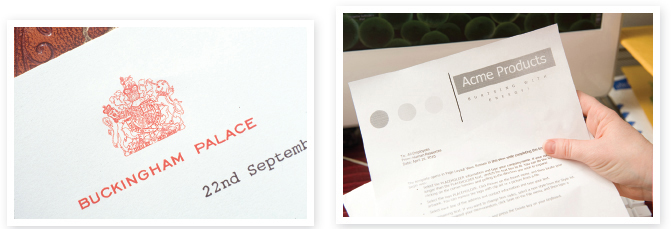UNDERSTANDING BUSINESS LETTERS
UNDERSTANDING BUSINESS LETTERS. Business letters are generally formal in tone and follow conventions designed to make the document a suitable record and to support additional communication. The principles for composing a business or job letter do not differ much from those for business e-
want to get a response?
Explain your purpose clearly and logically. Use the first paragraph to explain your purpose and announce any specific concerns. Anticipate familiar who, what, where, when, how, and why questions; be specific about names, titles, dates, and places. If you’re applying for a job, scholarship, or admission to a program, name the exact position or program and mention that your résumé is attached. Remember that your letter may have a long life in a file cabinet: Write a document that will make sense months or years later.
Tell readers what you want them to do. Don’t leave them guessing about how to respond to your message. Lay out a clear agenda for accomplishing one task: Apply for a job, request information, or make an inquiry or complaint. Don’t hesitate to ask for a reply, even by a specific date when that is necessary.
Write for your audience. Quite often, you won’t know the people to whom you are sending a business letter. So you have to construct a letter imagining how an executive, employer, admissions officer, or complaints manager might be most effectively persuaded. Courtesy and goodwill go a long way — though you may have to be firm and impersonal in many situations. Avoid phony emotions or tributes.

Left: Tim Graham/Tim Graham Photo Library/Getty Images.
Right: © Brigette M. Sullivan/PhotoEdit.
A job application or cover letter (with your résumé attached) poses special challenges. You want to present your credentials in the best possible light without seeming full of yourself. Be succinct and specific, letting achievements speak mostly for themselves — though you can fill in details that a reader might not appreciate. Focus on recent credentials and accomplishments and underscore the skills and strengths you bring to the job. Speak in your own voice, clipped slightly by a formal style. (define your style)
Keep the letter focused and brief. Like e-
Follow a conventional form. All business letters should include your address (called the return address), the date of the message, the address of the person to whom you are writing (called the inside address), a formal salutation or greeting, a closing, a signature in ink (when possible), and information about copies or enclosures.
Both block format and modified-
In indented form (not shown), the elements of the letter are arranged as in modified-